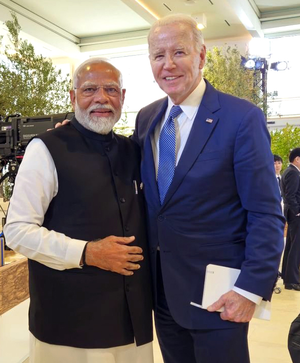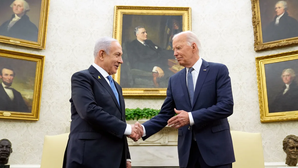Author: Agence France PresseTue, 2017-03-07ID: 1488845968815977500
SEOUL: Nuclear-armed North Korea’s launch of four missiles on Monday was a training exercise for a strike on US bases in Japan and supervised by leader Kim Jong-Un, Pyongyang’s state media said Tuesday.
Three of the four missiles came down provocatively close to US ally Japan, in waters that are part of its exclusive economic zone, representing a challenge to US President Donald Trump.
Washington and Tokyo have sought an emergency meeting of the UN Security Council to discuss the launch, likely to be scheduled for Wednesday.
Under UN resolutions, Pyongyang is barred from any use of ballistic missile technology, and the US ambassador to the UN, Nikki Haley, said on Twitter that the world “won’t allow” North Korea to continue on its “destructive path.”
But six sets of UN sanctions since its first nuclear test in 2006 have failed to halt its drive for what it insists are defensive weapons.
Kim Jong-Un gave the order for the drill to start, the North’s official Korea Central News Agency (KCNA) reported.
“Feasting his eyes on the trails of ballistic rockets,” he praised the Hwasong artillery unit that carried it out, it said.
“The four ballistic rockets launched simultaneously are so accurate that they look like acrobatic flying corps in formation, he said,” the agency added, referring to Kim.
The military units involved are “tasked to strike the bases of the US imperialist aggressor forces in Japan in contingency,” KCNA said.
But a US defense official told AFP that North Korea had launched five extended-range Scud missiles on Monday, with one crashing somewhere over the Korean peninsula.
Seoul and Washington last week began annual joint military exercises that always infuriate Pyongyang.
Kim Jong-Un ordered his military “to keep highly alert as required by the grim situation in which an actual war may break out anytime,” KCNA reported, and to be ready to “open fire to annihilate the enemies” when ordered.
Pyongyang regularly issues threats against its enemies, and carried out two atomic tests and a series of missile launches last year, but Monday was only the second time its devices have come down in Japan’s EEZ.
Japanese Prime Minister Shinzo Abe told parliament: “This clearly shows North Korea has entered a new stage of threat,” adding: “We can never tolerate this.”
The launches came ahead of a trip by new US Secretary of State Rex Tillerson to the region.
UN Secretary-General Antonio Guterres also condemned them, urging Pyongyang to refrain from further “provocations.”
Trump has described North Korea as a “big, big problem” and vowed to deal with the issue “very strongly.”
White House spokesman Sean Spicer said Monday that North Korea poses a “very serious threat,” adding the administration was taking steps to “enhance our ability to defend against North Korea’s ballistic missiles.”
The New York Times reported at the weekend that under former president Barack Obama the US stepped up cyberattacks against North Korea to try to sabotage its missiles before launch or just as they lift off.
Washington and Seoul have agreed to deploy a US missile defense system called THAAD to South Korea, which has infuriated China, the North’s key diplomatic ally and crucial to efforts to persuade it to change its ways.
Beijing has become increasingly frustrated with Pyongyang’s nuclear and missile activities, and last month announced a suspension of all coal imports from the North until the end of the year — a crucial source of foreign currency.
Pyongyang wants to develop an intercontinental ballistic missile (ICBM) capable of reaching the US mainland — something Trump has vowed would not happen.
It has undoubtedly made progress in its efforts in recent years, although questions remain over its ability to master re-entry technology and miniaturise a nuclear weapon sufficiently to fit it onto a missile warhead.
South Korea said Monday that four missiles were fired from Tongchang County in North Pyongan province into the East Sea — its name for the Sea of Japan — traveling about 1,000 kilometers (620 miles) and reaching an altitude of 260 kilometers.
After an emergency meeting of South Korea’s National Security Council, acting president Hwang Kyo-Ahn called the North’s nuclear and missile provocations “immediate and real threats” to his country.
“The results of the North having a nuclear weapon in its hands will be gruesome beyond imagination,” he said, citing the “brutality and recklessness” shown by the murder of Kim Jong-Nam.
Seoul has blamed Pyongyang for the killing of the half-brother of the North’s leader by two women using VX nerve agent at Kuala Lumpur International Airport last month.
Malaysia has expelled the North’s ambassador over the incident, who flew home Monday. Pyongyang responded by formally declaring the Malaysian envoy persona non grata.
Main category: Worldrelated_nodes: North Korea orders expulsion of Malaysian ambassador: KCNANorth Korea fires 4 banned ballistic missiles into seaMalaysia: Ambassador’s expulsion is a warning to North Korea








